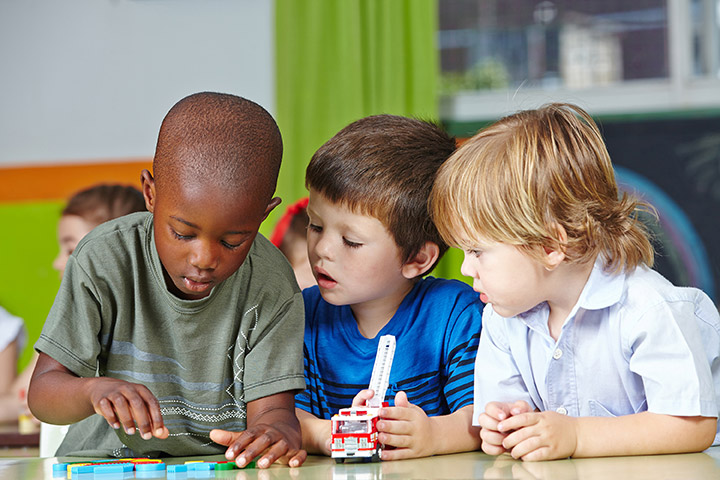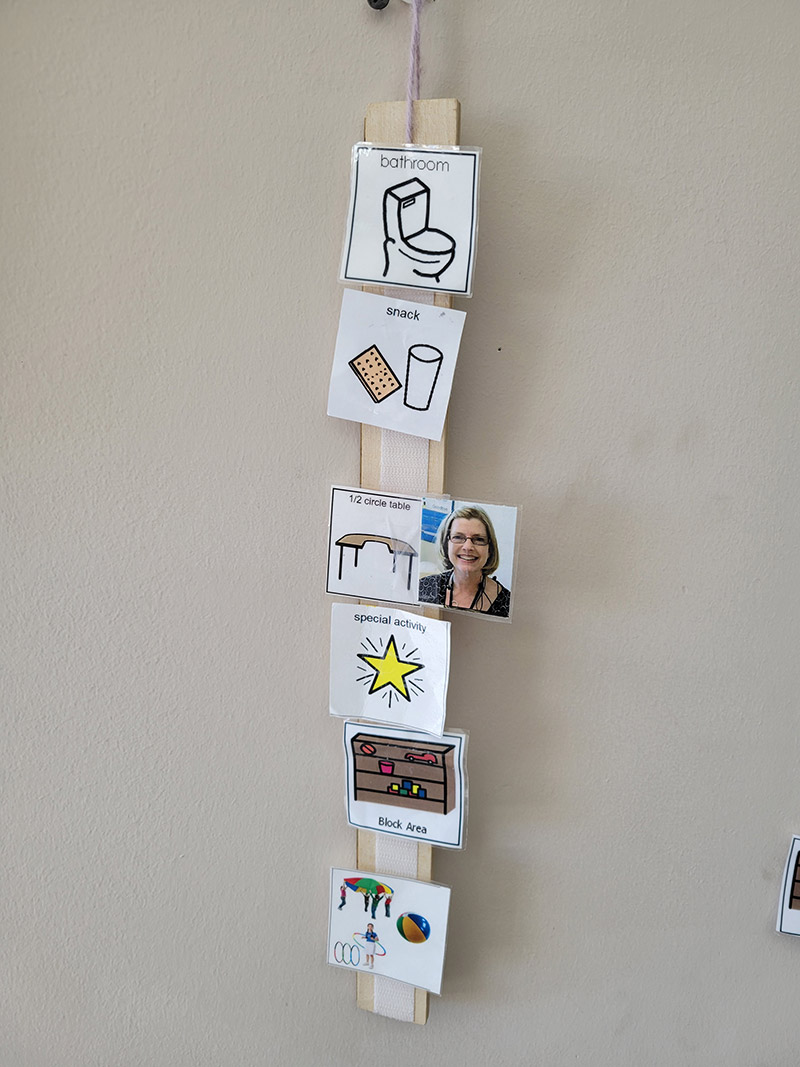*Information in this section was originally developed by a team that created a website for families focused on “raising deaf kids” (see About Us). The content may have been edited or updated.
+Note: We use the term “deaf or hard of hearing" (DHH) because there are some differences in the ways that these two groups of children access sound and communication. Children who are deaf have very limited or no hearing ability and may or may not use a cochlear implant in order to hear; children who are hard of hearing have partial hearing abilities and typically benefit from hearing aids. Children who are DHH may or may not use sign language, depending on their family decisions about communication.
Having a child who is deaf or hard of hearing (DHH) in a childcare center presents opportunities to consider how to best meet the child's needs. It can also be interesting and rewarding. The answers below can help you find out:
What does it mean to be deaf or hard of hearing and how will this affect a child?
- Children who are DHH do not hear (deaf) or hear partially (hard of hearing)
- A child who is DHH misses more than sound.
- She may also be cut off from hearing important everyday spoken and conversational information that allows speech and language to develop normally.
- She may have trouble expressing her feelings and thoughts to other people.
- She may have trouble understanding others. This can be very confusing and isolating.
- You can help by making sure that the child who is DHH is part of all activities and is never excluded.
- Some children who are DHH use sign language to communicate, others use spoken language (supported by hearing aids or cochlear implants) and some use both sign language and spoken language.
How can we communicate with a child who is DHH?
- Body language and facial expressions are very important. Match what you say with appropriate gestures and facial expressions. This helps to communicate your general feelings to a child who is DHH.

- Make sure you're looking at her and she is looking at you! She needs to see your whole face to read your lips and understand your facial expressions.
- She can read your face and your body to understand if you are happy or angry or sad.
- Every child needs to know what is going on in the childcare center.
- This is especially important for children who are DHH.

- In a childcare center, there are daily communications that one assumes a child will just pick up as part of the environment.
- Many of these communications may be missed by the child who is DHH.
- Providing access to communication at all times helps a child to understand her environment better.
- Many children benefit from a visual calendar of the daily routine.
- Daily calendars help children transition and know what to expect.
- When alerting the class to what is next, point it out on the visual calendar.
- These types of visuals are especially helpful to the child who is DHH.
- Sign Language is a form of communication. Sign language uses the hands, facial expressions, and gestures in order to "speak" to others who know sign language.
- Learning some basic sign language would allow you to communicate better with children who are DHH who are learning sign language. Remember that some children who are DHH are learning spoken language. Ask parents about their preferred approach(es) to communicating with the child.
- American Sign Language (ASL) is the native language of the Deaf community. It is taught at many community resource sites like churches, libraries, and community colleges. There are also many online resources to support the learning of ASL.
What happens if the deaf child has deaf parents? How can we communicate with and get in touch with their deaf parents?
- It is possible to communicate with deaf or hard-of-hearing parents through telephone technologies.
- Check with the parents of the child to find out the best way to communicate with them:
- Many deaf or hard-of-hearing people now prefer to communicate using email, text messages, or a video relay service (VRS).
- Many VRS services offer apps for the i-Pod touch, i-phone, or i-Pad. To see a video demonstrating the technology, visit
https://www.iaccessibility.com/videos/deaf-hard-of-hearing/index.cgi/video?ID=63
- Writing is a good way to communicate. Notes can be sent home each day. It is best to have a special notebook for communicating between home and school.
- Eye contact is very important when communicating with deaf or hard-of-hearing adults. Make sure you look directly at parents while communicating.
- If you are communicating through a sign language interpreter, maintain eye contact with the deaf parent and not the interpreter.